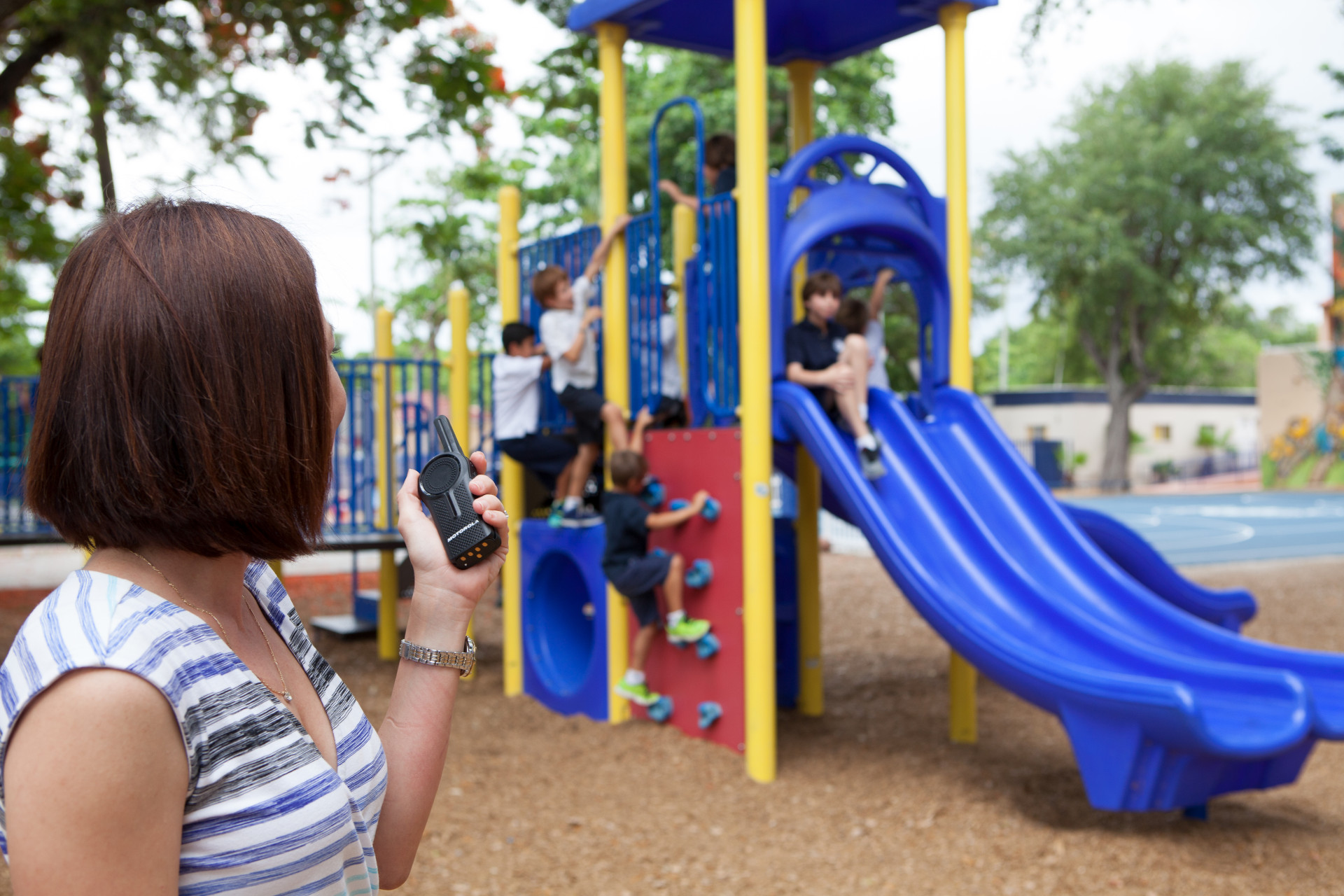
To better ensure the safety and security of the nation’s school children, districts are increasingly turning to two-way radios to facilitate communications between teachers, staff and public safety officers.
With push-to-talk capability, two-way radios offer educators an instant and reliable means of communication in an emergency. They’re also a critical everyday tool for teachers and staff who work with special-needs students.
“Some of the kids I work with are prone to seizures. Some have a history of harming themselves if they get upset or scared. And some have the potential to put others at risk,” said Kelly Dwyer, Educational Assistant at Wauwatosa West High School in Wauwatosa, Wisconsin. “All of these are highly unpredictable situations where I may need to summon help on a moment’s notice, and our two-way radios allow us to react quickly to that unpredictability.”
While he and his peers have cell phones, Dwyer says phones lose reception in some corners of the school. With radios, he knows that no matter where he is in the building, he can get a hold of somebody right away when a student needs assistance.
“We have a channel for the aides, but if need be I can switch to the channel that goes to my fellow associates or to the entire school. And because I know I can get help for the student right away, it makes me feel safer, too.”
The latest two-way radios are packed with features that allow educators like Kelly to better respond to unpredictability.
“Educators have to be prepared for an on-campus emergency,” said Terence Ploszaj, BAYCOM Director of Sales. “And a critical part of any plan is to have a communications strategy and infrastructure in place so that staff, teachers, security guards, bus drivers and first responders can quickly and reliably share information and coordinate efforts. The latest two-way radio technology delivers that capability.”
BAYCOM’s lineup of Motorola two-way radios include features such as:
- Push to talk: Contact multiple teams simultaneously and securely communicate with just one button.
- GPS: Quickly identify the location of students or staff and position team members where they’re needed most.
- Transmit interrupt: Give emergency communications priority over all others.
- Communicate directly with First Responders: Talk directly with 9-1-1 dispatchers and first responders heading to the scene.
- Eliminate Boundaries: Tie new radios to other existing devices, such as smartphones and other radios, to facilitate communication across any network, on-site or off.
To learn more about how two-way radios can help you ensure the safety and security of your students and staff, check out our website or contact us at 800-726-5426.
